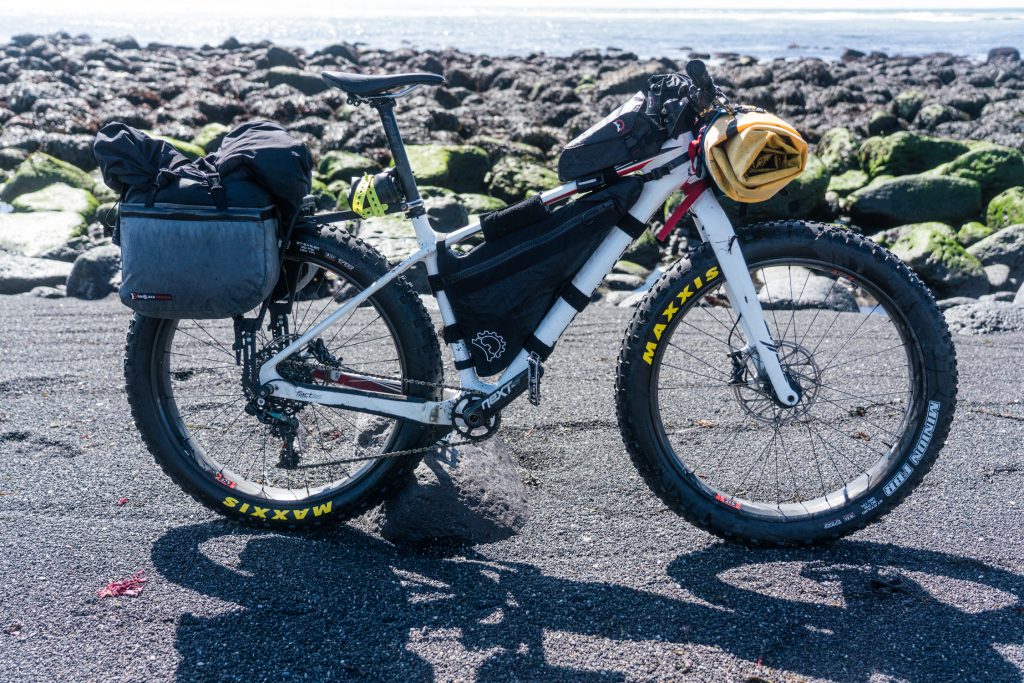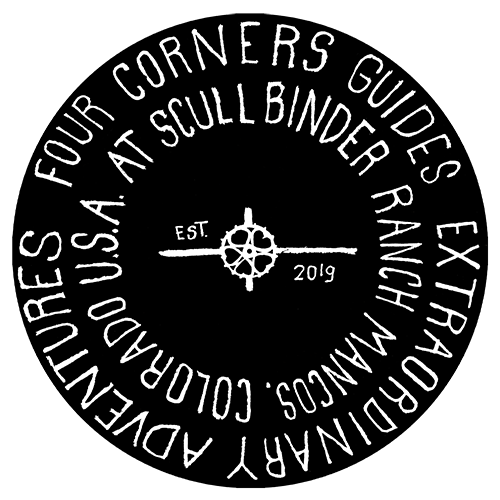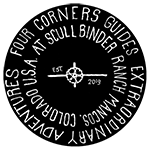What's the ideal bikerafting gear?
How do you choose the bikerafting gear you’re going to use? Is there an ideal set up? These are tough questions to answer, especially considering there are dozens of bikepacking gear companies in the world today! There’s really no ideal set up, and what you use totally depends on the type of bikerafting you plan to do. As we wrote in the recent The Radavist article, “Now and the Future of Bikerafting: Unpacking the 2023 Bikerafting Guide Survey Results,” the sport of bikerafting is growing and evolving, if not at a breakneck speed, at a steady pace. And along with it, companies are introducing more and more gear, some of it very specific to bikerafting.
Alpacka Raft introduced the first bikerafting-specific gear to the industry. They launched the ultralight Caribou packraft in the late 2010s, and since then it has sold very well, says CEO Thor Tingey. While it’s hard to say exactly what percentage of the uptick in packraft sales since the pandemic has to do with bikerafting, he says: “The Caribou is one of our best sellers, and bike tie-downs are by far our most popular add-on in the Custom Lab. So people are definitely seeing bikerafting and showing interest.”
A few other companies recently joined Alpacka in creating bikerafting-specific products. Stikine packrafts launched a bow protector in 2022, Kokopell just launched a set of waterproof bike bags to complement their bikerafting-friendly boats. And Current Raft now offers a “Bikeraft.”
“The sport has grown to the point that we decided to make the Durango Bike Bags to allow people to more easily bikeraft with packrafts,” Kelley explains in The Radavist article.
Kokopelli has more recently embraced and strongly promoted the sport of bikerafting. Why? It just makes sense, explains Kelley. “If we can enable people to get outside, and venture further more easily and readily, that would be awesome. Access to water, rivers especially, is a unique thing. So the fact that people are looking to combine sports and create new lines outside is something that we’re stoked to be a part of.”
Anyway, back to bike bags and bike gear… As with choosing a bicycle, there’s really no right or wrong answer. But there are PLENTY of options. Doom discusses just a few of these in Part 2 of this The Bikeraft Guide excerpt. Pus he answers some of your really random questions.
Have a question yourself? Please feel free to email us, and we’ll post an answer for you on Instagram. Or, if it warrants, we’ll write a blog post on it.

what bike bags should i use?
There’s a lot to this answer, so we’re giving it its own section. However, there are endless types of bike bags, dozens of companies and plenty of ways to DIY bags. So this is really just a super brief overview. Check out Bikepacking.com. They have tons of bike bag reviews.
Rack vs. Seat Bags
The type of bike bags you use depends on whether or not you’re rocking the rack. If I have a rack, I’ll carry lightweight panniers. If not, I’ll use a seat bag. Both have their merits.
If you’re going heavy or if you’re out for more than four or five days, the rack is the way to go. You can take a lot more stuff. But, it is harder to deal with a rack on a bike when you’re bikerafting. It’s just more stuff that can get snagged if the boat flips, etc.
If you’re taking less stuff, seat bags work really well and are lower profile. And some people can rock the seat bag for up to seven days. It just depends on what you pack, how often you can resupply and whether or not you want to carry anything in a backpack.
On the other hand, if you’re a short, small person, sometimes seat bags aren’t practical because they constantly hit the rear tire, especially if you’re riding a 29’er. So, you’ll need a smaller seat bag, which doesn’t carry as much stuff. However, for a normal male, seat bags work well.
Frame Bags
Frame bags are clutch. I am tall and my frame bag is large. I can carry snacks for the day, up to four liters of water in a soft water bladder, an extra tube and all the tools I need for a trip. And, of course, if there’s extra room, I’ll carry a couple beers.
Unfortunately, most women’s bikes or smaller men’s bikes don’t accommodate as large frame bags. Lizzy puts extra water and/or heavier items in the Revelate Designs Joey, designed for the downtube of her bike. Or, she’ll just use Titan Straps to lash extra water bottles onto the downtube.
Top Tube Bags
We both always carry top tube bags, in which we put our phones, snacks and sunscreen. Lizzy also always runs one to two stem bags on either side of her handlebars, in which she carries everything she wants accessible throughout the day.
Handlebar Bags & Harnesses
I’ll also usually have a harness or handlebar bag of some kind. Again, what I use depends on whether or not I bring a rack. Sometimes I lash the packraft to my handlebars with straps. Other times I put it on my rack. Still other times, I may cinch it on my handlebars with a harness. When I’m carrying a lot of gear, I’ll bring a handlebar bag because you can get stash so much inside them, and they are fully enclosed.
There’s really no one answer to this question. Some people don’t mind carrying heavier backpacks; other people want no weight on their backs. There’s no formula or one right way. It depends on each person, and it depends on the trip.
What shoes should I bring?
It depends on the season and what type of terrain you’ll be on when rafting, or whether or not you use clipless or flat pedals. I normally use my flat pedals for all things bikerafting and bikepacking. Occasionally I use clipless pedals, but only if I know there will be little if any hike-a-biking on the trip.
We don’t recommend clipless shoes for bikerafting. They are just too uncomfortable. You may need to drag your boat through mud or you may want to do side hikes, in which case you want comfortable tennis shoes that won’t easily fall off. But, if you’re crossing a mellow lake in the summertime, lightweight sandals or flip flops will do the job. If it’s cold, you’ll want a pair of shoes for the day, but then possibly a pair of dry, lightweight camp shoes for the evening.
Should I run Tubeless tires? What are the advantages and disadvantages?
You should always go tubeless. You’re less prone to getting flats, first and foremost. But you also have a lighter setup overall. It’s a more supple ride, and you’ll have better traction. And in the more extreme circumstances, if you’re riding fat bikes in the winter at well below zero degrees, tubes sometimes break apart and explode. But, if it’s that cold, you’re not going to be bikerafting because everything’s frozen! Overall, however, the current tubeless scenarios are leaps and bounds ahead of using tubes. Use tubes as a backup and a last resort or if you have an old bike with wheels you just can’t give up, but they’re not tubeless compatible. Otherwise, just run tubeless tires.
Should I wear gloves? How do I take care of my hands?
I treat my hands as badly as possible before the trip so that they’re ready 😉
If you have soft hands and you go on one of those trips, you’ll get wrecked. If you have gnarly hands or climber hands, for example, you’ll totally be fine. I do wear gloves, especially if it’s cold. I probably wear gloves less often than other people because I’m a photographer and I want to be able to use my camera. However, I think all beginners should wear gloves because they give you that added protection should you fall into a cactus or hit the ground hard.
Find a comfortable pair of long-fingered gloves with some padding in the knuckles (for hitting trees and branches) and on the palms. If you like cold-weather bikerafting, wear warm weather cycling gloves (and neoprene pogies or neoprene gloves while in the water). If it’s really extreme weather warranting cycling pogies, you’ll not likely be bikerafting.

Other random questions related to gear...
I know nothing about bike fit or the proper height for my saddle. What should I do?
Get a professional opinion from the bike fitter, call your local bike shop and ask for assistance or ask an experienced friend to help you out. You’ll find a variety of accredited bike fitting organizations if you do a simple Google Search of the topic. The couple hours and few hundred bucks will be well worth it because you’ll be more comfortable overall and less likely to be injured, aspPoor bike fit can lead to strain and discomfort and increase the likelihood of a crash.
What tire pressure should I run?
One of the worst questions you can ask is, “What tire pressure should I run?” Tire pressure is unique to both the rider and the terrain, so it’s like asking what size underpants you should wear. But I’ll give you an overview of what I do.
If you’re trail riding on any kind of plus bike, you should be around 20 PSI, plus or minus three or four PSI. However, the PSI you run depends on the size of the rider. If you weigh 90 pounds, you want to be closer to 15. If you weigh 250 pounds, you might crank it up to 25. Heavier people should go higher, and lighter people should go lower.
Now, if you’re riding a fatbike for your trip, the PSI you run is terrain dependent. If you’re riding in the snow your tire pressure might go from one to 10 PSI, depending on the snow conditions. And there’s a huge variety of snow conditions. In the softest snow (the worst conditions), you need to run the lowest PSI. And then you want to be around 10 when you’re on like a nice cat track or something. Or if it’s been really wet and warm out and then you have a hard freeze overnight and it’s like a nice skating rink, you want to run around 12 PSI. It’s important to experiment with tire pressure before undertaking a long trip.
Are the brake pads sticking together ever a problem when bikerafting? I’ve heard that you can use a piece of cardboard in a pinch, but is it necessary?
If you have hydraulic brakes then, yes, this can happen when your wheel is removed. If you mistakenly pull on the brake lever when the wheel is removed, the pads will be drawn together and stay in this position. This disc might not fit back into place, and you will then need to force the pads apart with a flat headed screwdriver or another tool. You can buy brake pad spacers from Shimano/SRAM, etc, and then slot them into the calliper to keep the pads apart when in transit. Otherwise, yes, a piece of cardboard might do the job. However, I wouldn’t use cardboard if you’re bikerafting. It might get wet and you’d run into the same problem.
On the other hand, mechanical disc brake pads will not stick together when your wheel is removed. They are field serviceable, so there is an advantage there.
Want to learn more about what to pack for bikerafting or bikepacking? We’ve got a bunch of articles. Check out:
- Review: Revelate Designs’s 2023 Water-Resistant Nano Panniers Are Perfect for Bikerafting
- How to Pack Your Bike for Bikepacking, by Huw Oliver (not specific to bikerafting, but helpful nonetheless)
- Pack This: A Tajikistan Bikerafting Kit, by Steve “Doom” Fassbinder (packing for month-long international bikerafting adventures)
- Bikerafting Pack This Tip: What’s in Your 2-Day Bikeraft Kit? By Lizzy Scully








